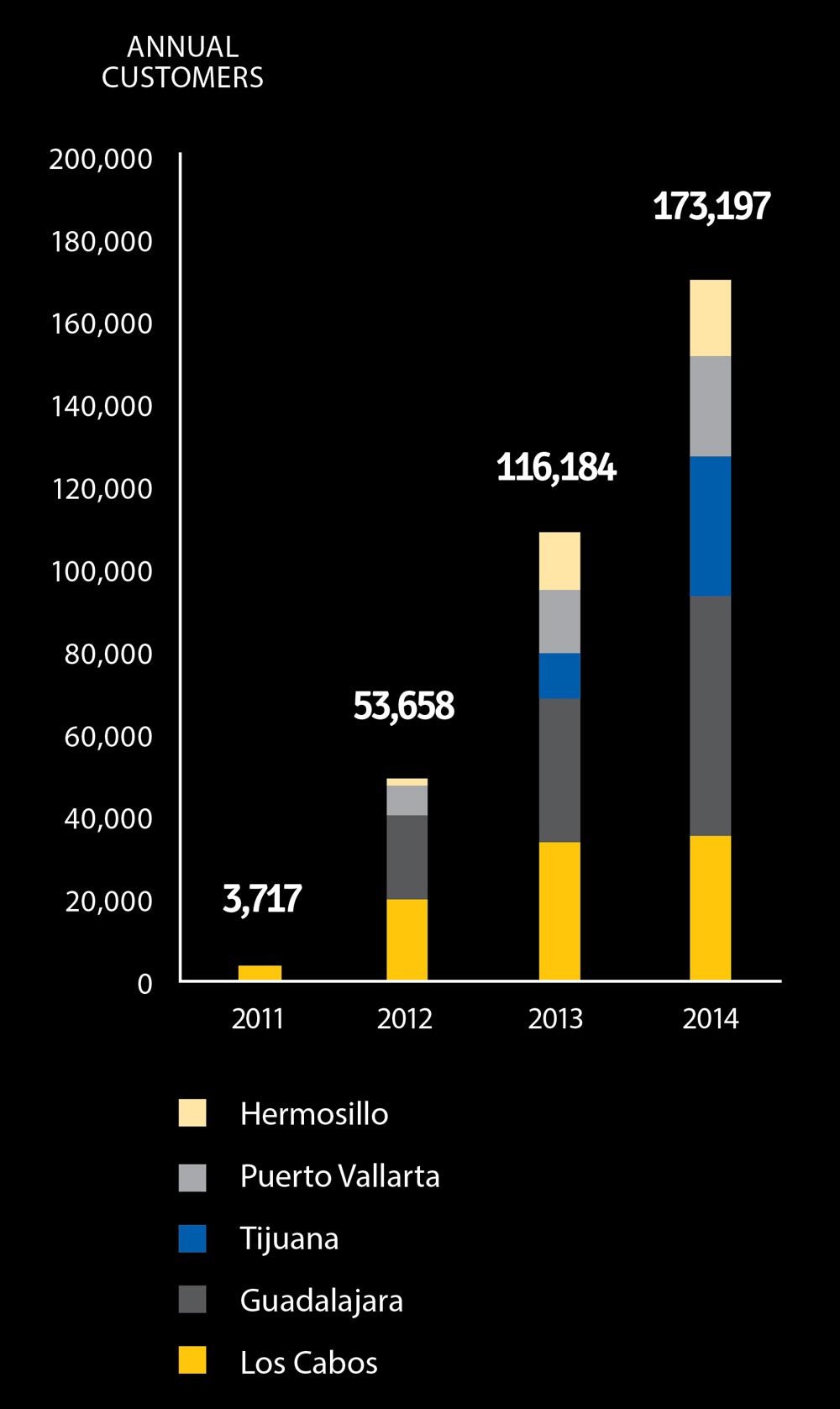Today they represent 25% of our revenues, although some airports such as Los Cabos have reached 36% and, with an expected increase of at least half a percentage point a year, at the end of this five-year period, commercial revenues are expected to account for approximately 27.5% of the total mix.
Commercial revenues have been rising because of a strategy aimed primarily at expanding commercial areas, improving contract terms, recovering long-term leasing to operate certain areas of the airports, and exploiting directly operated businesses. We have also modified the design and layout of passenger terminals, increased visibility and facilitated access to convenience stores and duty-free shops, a strategy that is aimed at encouraging consumption. We have also reduced passenger processing times so they are less rushed at the airports, and more likely to take advantage of the product and service offerings designed in keeping with world trends, and which passengers demand.
Today we directly operate the parking areas of all the airports, which total 6,189 spaces. These revenues are directly related to passenger traffic and now represent the largest component of our commercial revenues, considering growth prospects for the next five years, their potential is tremendous.
Another strategy that has been proved very profitable is directly operating advertising space in all our airports, whose contribution to revenues rose from just MXP 5.9 million in 2002 to MXP 100.2 million in 2014. We expect this to continue rising thanks to improved attention to advertisers and strategies for optimizing and adding smart technology in existing advertising areas. The same can be said of convenience stores, where we offer passengers a wide range of articles. Beginning in 2012, when the first “Aeromarket” brand convenience store opened at the Aguascalientes airport, another 14 have opened. In the medium term we plan to open another 14, covering almost every airport in our network. As of the date of this report, there were a total of 15 stores open, operating in Guadalajara, Los Cabos, Puerto Vallarta, Hermosillo, La Paz, Aguascalientes and Guanajuato airports.
One of our greatest achievements in terms of image, service and profitability have been the VIP lounges, which we began to directly operate during the third quarter of 2011 at terminals 1 and 2 of the Los Cabos airport. Due to the success of this model, we have gradually begun operating VIP lounges in other airports, and we now have this service at Guadalajara, Puerto Vallarta, Hermosillo and Tijuana, and soon at Guanajuato and Aguascalientes, with a total of 9 lounges. These VIP lounges are for common use, spacious and comfortable, open to passengers from any airline. The increase in users has been remarkable, and for 2015 we plan to increase the number of visitors to 240,000 passengers and bring in close to MXP 53.0 million a year in revenues.
Although GAP’s performance in the area of commercial revenues has been excellent, we still have considerable potential to increase them going forward. As we handle an increasing number of passengers, we plan to offer a greater array of products and services, as has been our track record, with prestigious restaurants and hotels.
